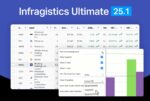
SvelteKit announced version 1.0 of its framework that enables developers to create apps of all sizes.
The framework is built on top of Svelte, a UI component framework which makes it much easier to build UIs than by working in the DOM directly.
SvelteKit defaults to client-side navigation after the initial server-rendered page load, which allows for fast page transitions, state that lasts between pages, and less data usage.
It also enables developers to use one language instead of having two apps that generate HTML and handle client-side interactions separately. The app can be deployed as a traditional Node server or by using serverless functions at the edge through SvelteKit.
Developers can build apps with personalized or dynamic data without having to fetch data from the browser after the page loads.
SvelteKit 1.0 uses Vite, a build tool that includes support for hot module reloading, TypeScript, and other essential developer tools. Users can then install plugins through Vite and Rollup ecosystems to add support for other tools.
If an app was built with the pre-release versions of SvelteKit, the company recommends upgrading to the final pre-release version ‘@sveltejs/kit@1.0.0-next.587’ before upgrading to 1.0.





